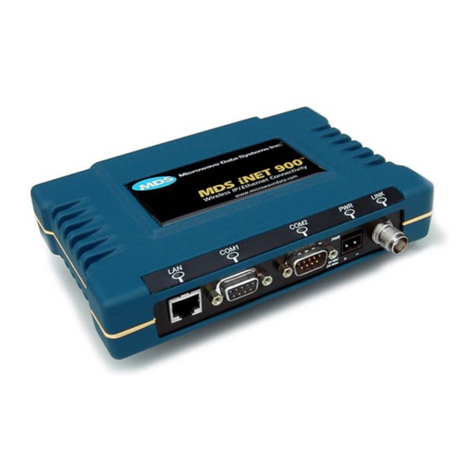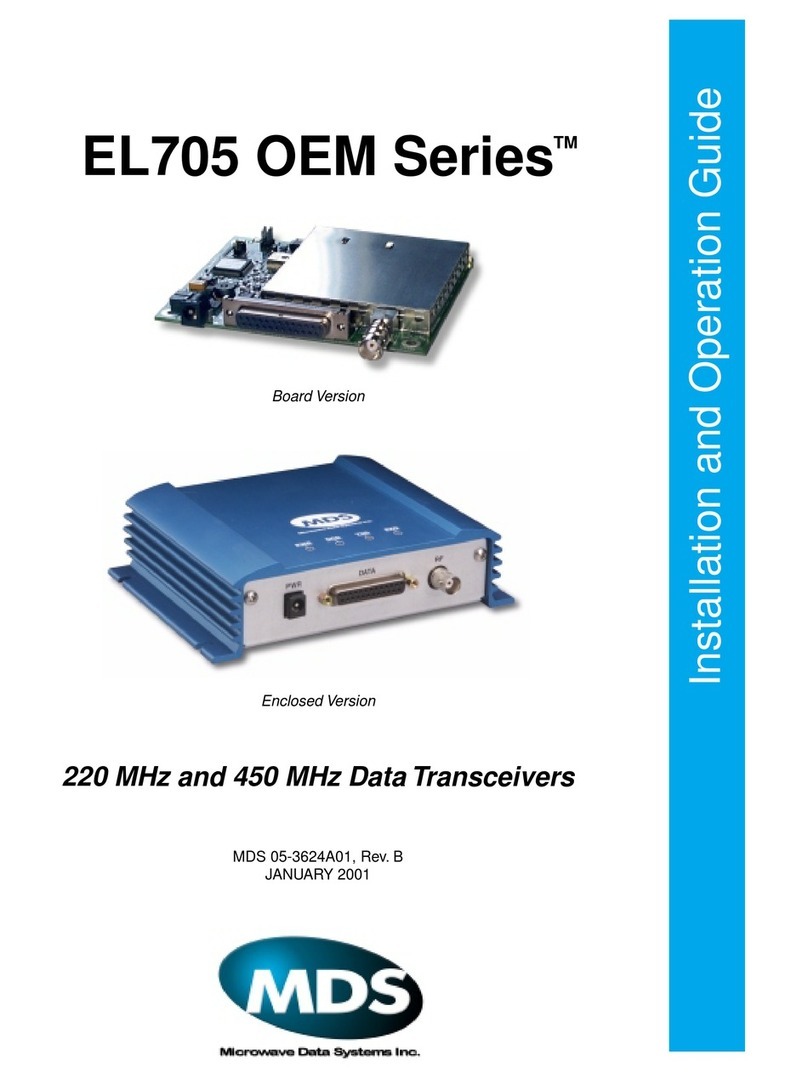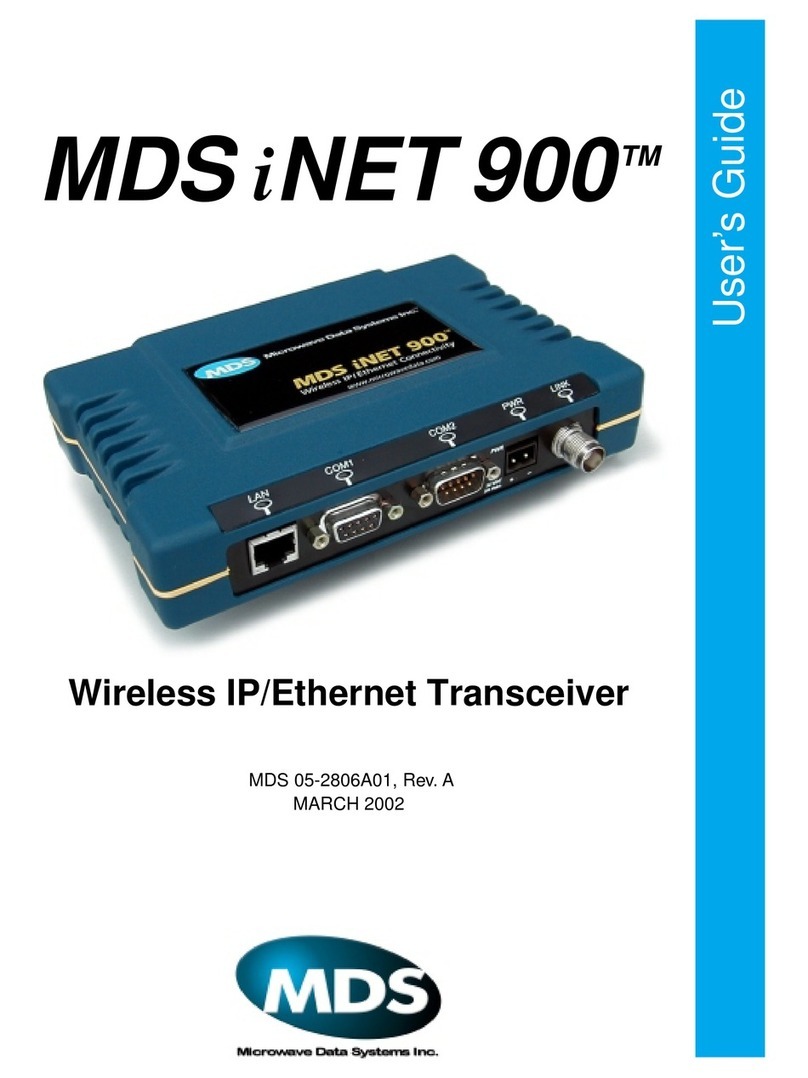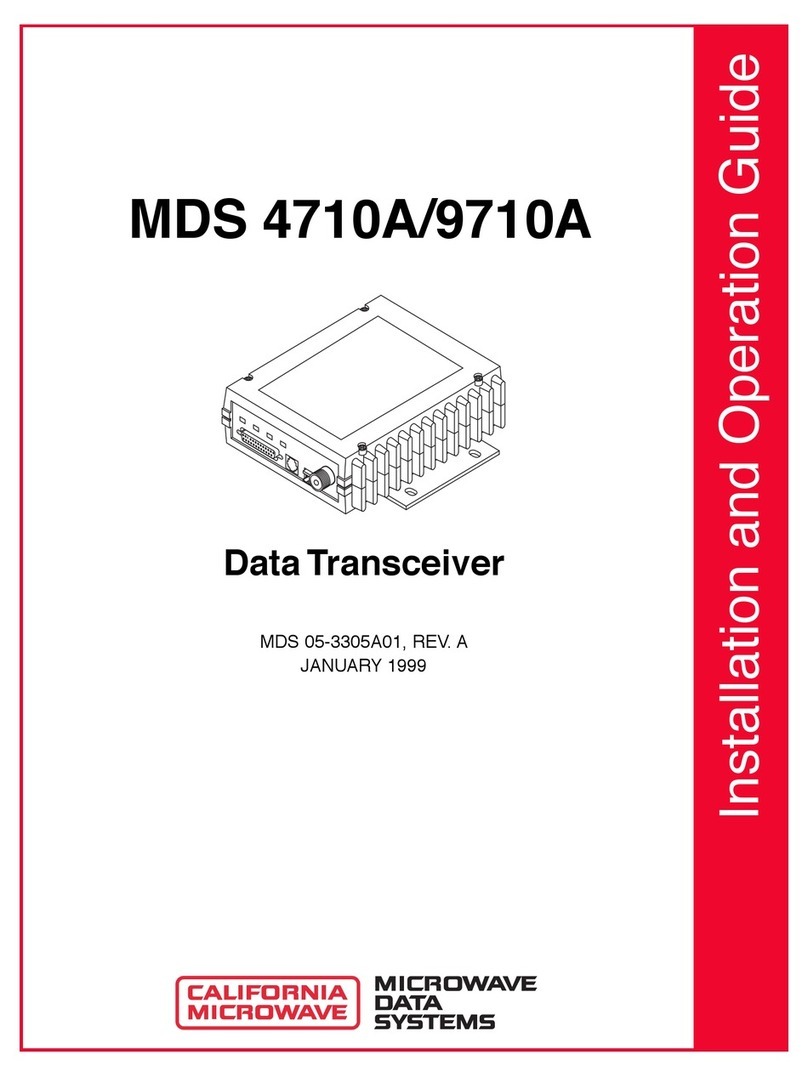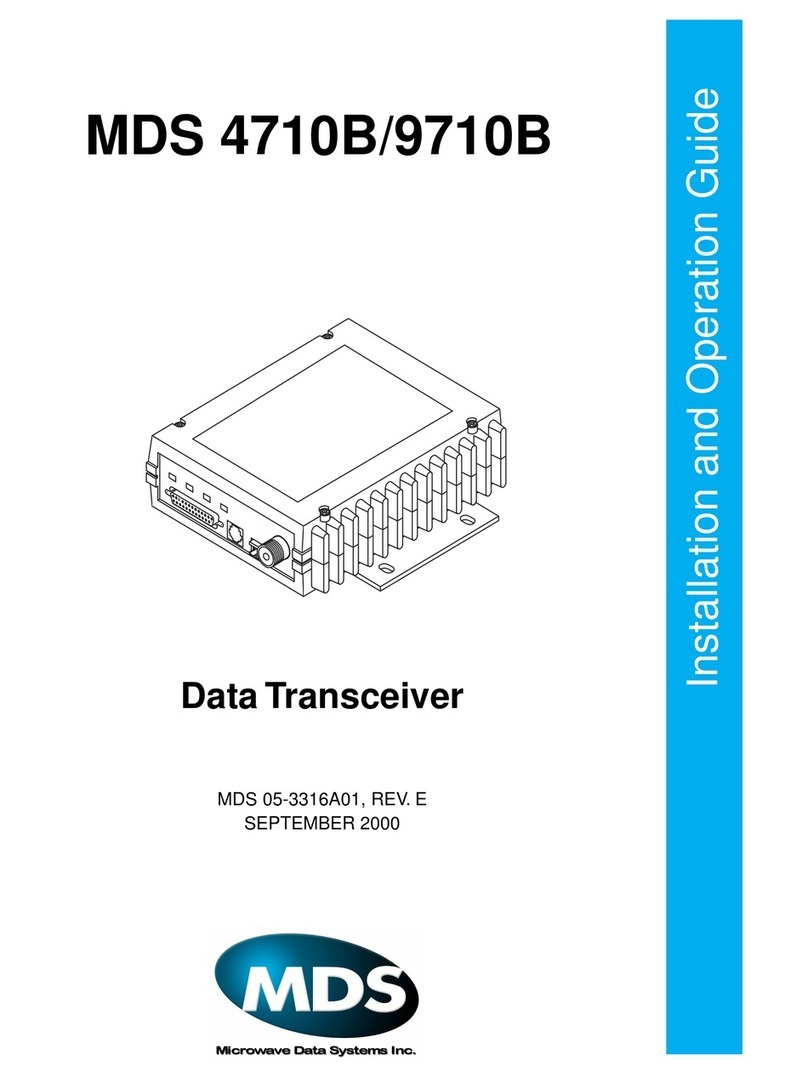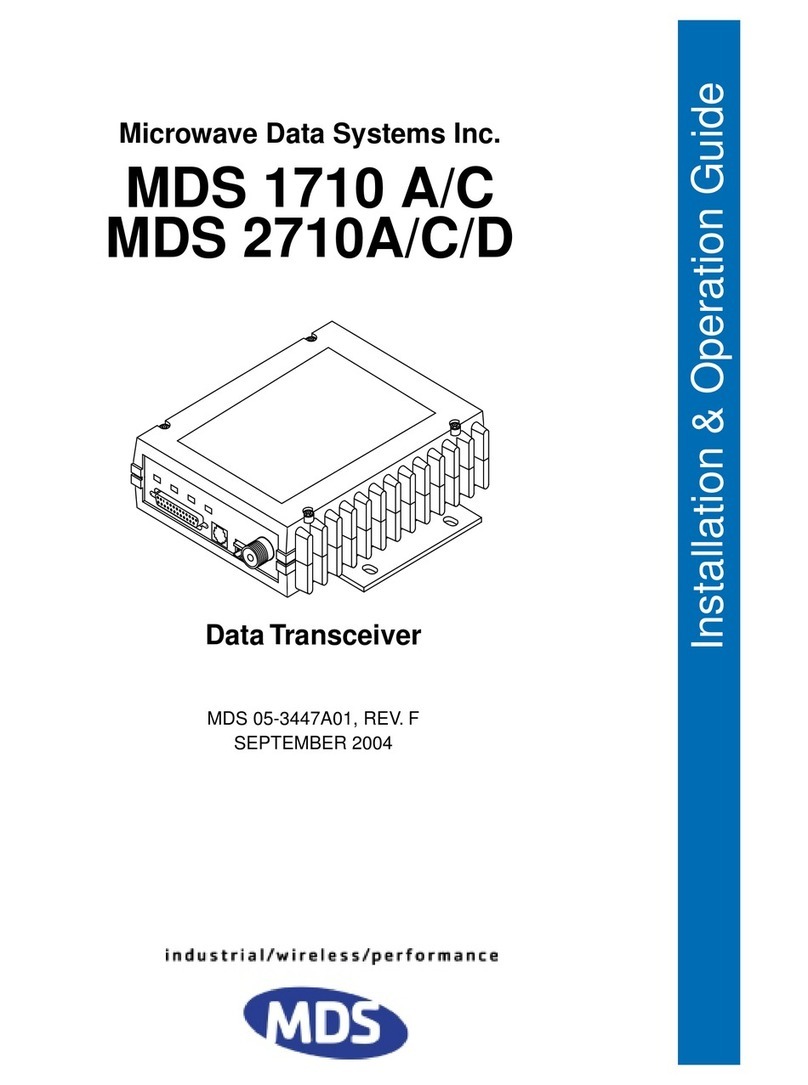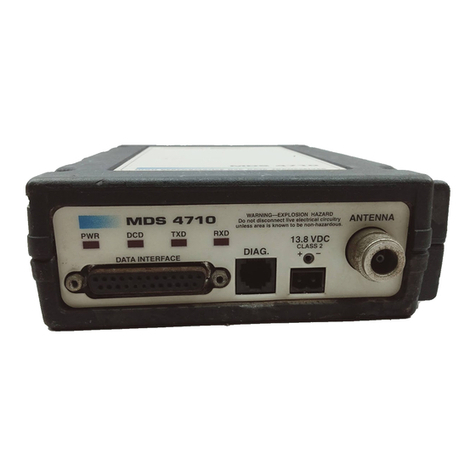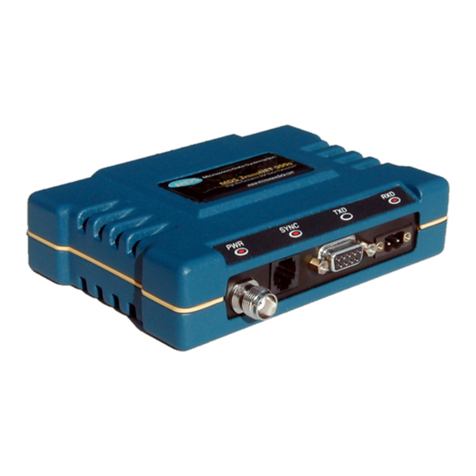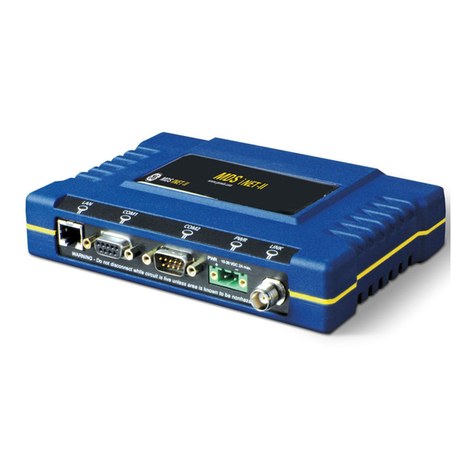
iv MDS entraNET System Guide MDS 05-4055A01, Rev. C
Copyright Notice
This publication is protected by U.S.A. copyright law. Copyright 2006, Microwave Data Systems, Inc. All rights
reserved.
ISO 9001 Registration
Microwave Data Systems adheres to the internationally-accepted ISO 9001 quality system standard.
Related Materials on the Internet
Data sheets, frequently asked questions, application notes, information on firmware upgrades, and other valuable
information can be found on the MDS Web site at
www.microwavedata.com
.
About Microwave Data Systems Inc.
Over two decades ago, MDS began building radios for business-critical applications. Since then, we’ve installed more
than 500,000 radios in over 110 countries. To succeed, we overcame impassable terrain, brutal operating conditions
and disparate, complex network configurations. We also became experts in wireless communication standards and
system applications worldwide. The result of our efforts is that today, thousands of utilities around the world rely on
MDS-based wireless networks to manage their most critical assets.
The majority of MDS radios deployed since 1985 are still installed and performing within our customers' wireless net-
works. That’s because we design and manufacture our products in-house, according to ISO 9001 which allows us to
control and meet stringent global quality standards.
Thanks to our durable products and comprehensive solutions, MDS is the wireless leader in industrial automation—
including oil and gas production and transportation, water/wastewater treatment, supply and transportation, electric
transmission and distribution and many other utility applications. MDS is also at the forefront of wireless communi-
cations for private and public infrastructure and online transaction processing. Now is an exciting time for MDS and
our customers as we look forward to further demonstrating our abilities in new and emerging markets.
As your wireless needs change you can continue to expect more from MDS. We'll always put the performance of your
network above all. Visit us at
www.microwavedata.com
for more information.
OPERATIONAL & SAFETY NOTICES
CSA/US Notice
The transceiver has been recognized for use in hazardous locations by the Canadian Standards Association
(CSA), which also issues the U.S. mark of approval. The CSA Certification is in accordance with CSA STD
C22.2 No. 213-M1987.
FCC Part 15 Notice
The transceiver complies with Part 15 of the FCC Rules. Operation is subject to the following two conditions: (1) this
device may not cause harmful interference, and (2) this device must accept any interference received, including inter-
ference that may cause undesired operation. This device is specifically designed to be used under Section 15.247 of
the FCC Rules and Regulations. Any unauthorized modification or changes to this device without the express approval
of Microwave Data Systems may void the user’s authority to operate this device. Furthermore, this device is intended
to be used only when installed in accordance with the instructions outlined in this manual. Failure to comply with these
instructions may also void the user’s authority to operate this device.
Manual Revision and Accuracy
While every reasonable effort has been made to ensure the accuracy of this manual, product improvements may result
in minor differences between the manual and the product shipped to you. If you have additional questions or need an
exact specification for a product, please contact our Customer Service Team using the information at the back of this
guide. In addition, manual updates can often be found on the MDS Web site at
www.microwavedata.com
.
U.S. Installations:
Professional installation required. The radio equipment
described in this guide emits radio frequency energy. Although the power level is
low, the concentrated energy from a directional antenna may pose a health hazard.
For 900 MHz units, do not allow people to come closer than 23 cm (9 inches) to
the antenna. For 2.4 GHz units, do not allow people to come closer than 5 cm (2
inches) to the antenna. These distances apply whether the transmitter is operated
in indoor or outdoor environments. More information on RF exposure is available
on the Internet at
www.fcc.gov/oet/info/documents/bulletins
.
ETSI Installations:
In regions where the European Telecommunications Stan-
dards Institute (ETSI) standards apply, 2.4 GHz units with a maximum output
power of 100 mW EIRP are supplied. Do not allow people to come closer than 2.2
cm (1 inch) to the antenna.
RF Exposure
